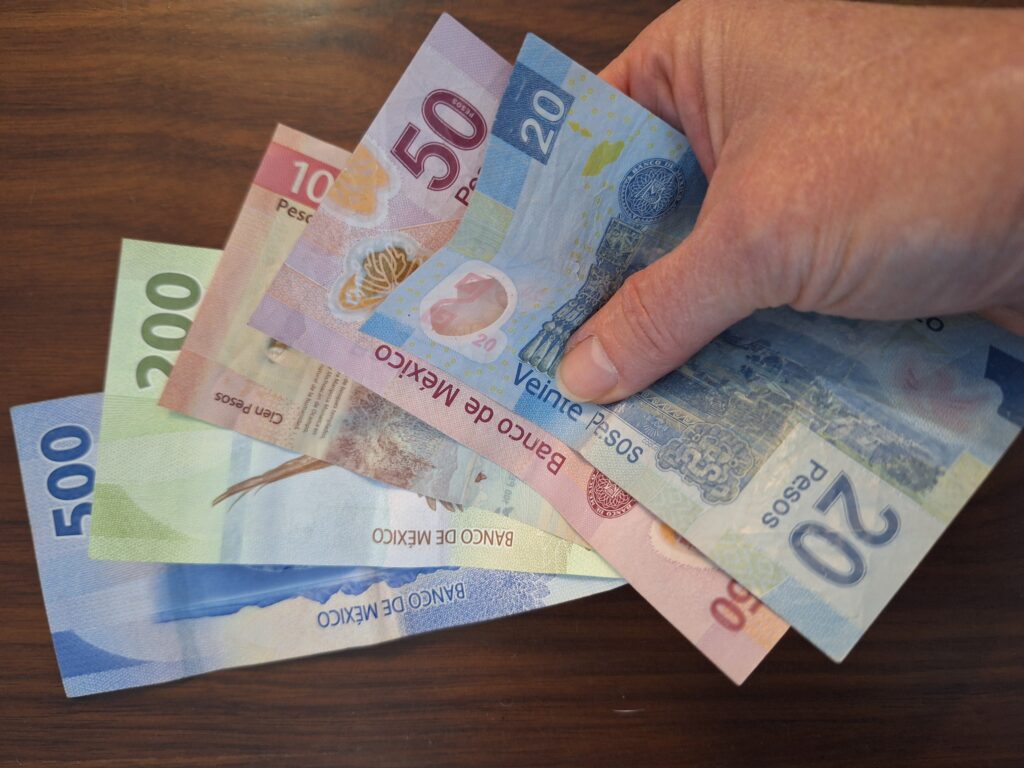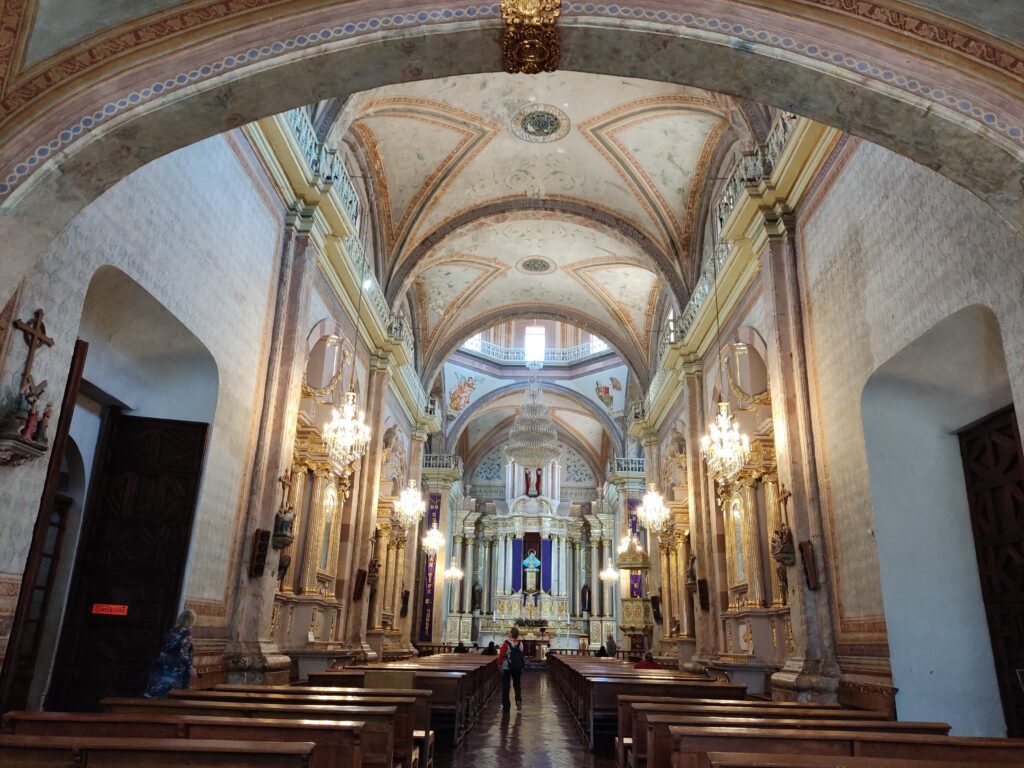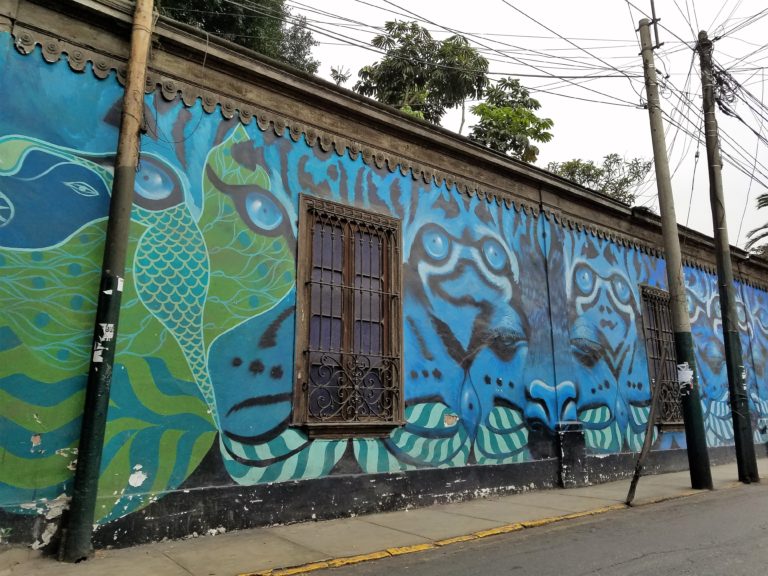Mexico Travel Tips: Top 24 Questions Answered for Tourists Traveling to Mexico
Mexico is a beautiful country with gorgeous landscapes, modern cities, and regional cuisines that are worth the extra pounds. For many Americans, Mexico is their first venture outside the United States.
More than any other country we personally have visited, Mexico makes it easy to mingle with the locals and experience their culture, but there are still some questions that pop up in everyone’s minds based on negative media. So we want to alleviate your fears and answer the most common questions we get when friends come to visit us. We put together these 24 Mexico travel tips to help you feel comfortable eating, traveling, and interacting with the locals.
Disclosure: Some links may be affiliate links where we receive a super-small commission at no additional cost to you if you click through and make a purchase. We call this our Chocolate & Churro Fund.
1. What’s the best time of year to visit Mexico?
October through March is the best time to visit any place in Mexico. For beach destinations, November to April offers the best weather. Hurricane season is from June to November on both coasts. You may have good weather, or you may be rained out for days. May and June are the hottest months of the year with violent rain storms. It’s best to avoid Mexico during these months.

2. What are the entry requirements for Mexico?
Most tourists from the US, Canada, and many EU countries do not need a visa for visits up to 180 days. You’ll need a valid passport and a tourist card (FMM), which you can get upon arrival or online at the Mexico Tourist Card website.
3. How do I get around Mexico?
Most places in Mexico have taxis and Uber to get around. If you are traveling between cities, buses are the most economical and comfortable way to travel. Splurge on the better buses like ETN and Primera Plus. For travel between cities that are more than 5 hours apart, domestic flights are available. Only Mexico City, Monterrey, and Guadalajara have metro systems.
4. Is it safe to travel in Mexico?
Yes, generally speaking, Mexico is safe for tourists. Like with any place, stay aware of your surroundings, avoid risky areas, and follow local advice. Cities such as Queretaro, Guanajuato City, and San Miguel de Allende are safe to walk around at night even for solo women travelers. Mexicans do warn that you should not travel at night between cities.
What about the cartels?
Cartel activity is between cartels. They don’t mess with tourists. And as long as you aren’t a drug dealer trying to move in on their territory, you should be fine.
5. What currency is used in Mexico?
The currency is the Mexican Peso (MXN). Credit and debit cards are widely accepted, but Mexico is still largely a cash society. For local markets or small purchases under 500 pesos (roughly $27 USD), cash is preferred. Restaurants and hotels will accept credit cards.
Inform your bank of your travel plans and use ATMs to get cash at a better exchange rate. Exchange a small amount of money before arriving for immediate needs.
Also, when paying when a card at a restaurant, they will bring the “terminal” to you. Your credit card never leaves your sight.

NOTE:
Beach cities like Cancun and Cabo may accept US dollars, but most of the country only accepts pesos. If a restaurant or vendor does accept your US dollars, remember that they have to take time out of their day to go exchange the money, and lose on the exchange fees. Make sure you tip them extra to cover this.
6. Can I drink the water in Mexico?
This question is extremely outdated. Maybe back in the 60s and 70s, there were issues with drinking out of the tap, but water treatment has been greatly improved in the last 20-30 years. That being said, everyone in Mexico still drinks bottled water. If you go to a restaurant and ask for water, you will always be served bottled water. If you go to someone’s house, they will more than likely give you purified water from a water dispenser. Unless you have a really sensitive stomach, there is no need to be worried about brushing your teeth and rinsing your mouth out with tap water.
7. Is the ice safe in Mexico?
Yes, the ice is safe in Mexico. All restaurants have a water filtration system for their ice. Word of mouth is the fastest and most effective way to advertise, good or bad, so imagine if a place served bad ice. They wouldn’t be in business for very long.
8. Can I eat fruits and vegetables washed in tap water?
We haven’t had any problems with washing our fruits and vegetables in tap water or eating fruit and salad at hotels. From what I hear, lettuce may be your only concern because it holds a lot of water. If you have a sensitive stomach, make sure it is thoroughly dried, and don’t order it at a restaurant. Again, a restaurant will go out of business quickly if someone gets sick from their food.

9. Eating times in Mexico
If you have routine times of when you eat, this may be the hardest part to get used to while you travel through Mexico. A good measure on whether a restaurant is good or not is by how many people are eating inside. But if you go at your normal eating time you probably won’t find many people in the restaurants except Gringos.
We’ve seen coffee shops open at 10, but not be ready to serve until 10:30 am. Lunch places don’t open until 1pm, but most people come in around 2:30 pm when we are leaving. Dinner is also late. They start serving at 6 pm, but it won’t get crowded until after 8 or 9pm. Prepare to eat a little later than normal and check the opening times.
10. Which salsa is spicier?
We may have been taught as kids that red means hot, but the green salsa will make you sweat and your eyes water. Red salsas are milder and made with roasted tomatoes and chilis while green salsas are usually serranos, tomatillos, and fresh herbs. There is a possibility that it could be avocado creme, but try a very small amount to be sure.
Eating Tip: No matter how hungry you are and how great the chips look, wait until your drink comes or you may be in pain for quite a while.
11. Can I trust the seafood away from the beach areas in Mexico?
The seafood options in Mexico are not limited to just the beach towns. Seafood is delivered daily all over the country. If you want seared tuna or octopus in Puebla or San Miguel, it’s on the menu and you won’t be disappointed. Both La Docena Oyster Bar & Grill restaurants located in Guadalajara and Mexico City have been listed in Latin America’s Best 50 Restaurants for their quality seafood. Ceviche and aguachile are a common appetizer in Mexico, no matter where you are.

12. What should I know about local customs and etiquette?
Mexicans are friendly and helpful. Greet with a handshake or a hug. Dress modestly at religious sites and be respectful, especially to elders, in local interactions.
Greetings in Mexico
Mexicans are very friendly. It’s common for people to say hello to each other as they pass by. You will see this in smaller neighborhoods away from the tourist areas.
- Hola! Buenas dias! (Hello! Good morning!)
- Hola! Buenas tardes! (Hello! Good afternoon!)
- Hola! Buenas noches! (Hello! Good evening!)
If you are sitting in a restaurant eating your food, people passing your table may say Buen Provecho, same as Bon appétit. As you leave the restaurant, pay it forward and wish the next table “Buen provecho”. They will appreciate you embracing one of their customs.
13. How do I handle language barriers?
Spanish is the primary language, but many in tourist areas speak English. Learning basic Spanish phrases and using translation apps can help with communication.
Don’t be embarrassed to use what little Spanish you know. Mexicans appreciate your effort and don’t care about mistakes in conjugation.
14. What is the tipping etiquette for taxis and rideshares?
For taxis, rounding up the fare and giving a 10% tip is customary. Rideshare apps like Uber have a tip area in the app. Additional tips are always appreciated for exceptional service.
15. What is the tipping etiquette for restaurants?
Tipping in Mexican restaurants has become a hot topic. Americans are used to tipping 20-25% at restaurants. Some people will tell you not to tip more than 10% because then the Mexicans will expect higher tips from foreigners, but I think it depends on the establishment and service. Mexicans earn about $25 USD a day (not hourly). If you receive excellent service and you can afford to pay more, then you should. We typically tip 15-20% for good service.
16. What is the etiquette for visiting churches?
Churches are a place of worship every day of the week. Shorts, mini skirts, halter tops, and bare arms are seriously frowned upon. Men should wear pants, and women should wear pants or long skirts and preferably a top with short or long sleeves. The smaller the town, the more conservative your clothes should be.
Be respectful of local customs, and follow any rules or guidelines provided. Silence or speaking softly is often expected in places of worship. Also, tourists are not allowed to wander around the church during service.

17. What type of electrical outlets are used in Mexico?
Mexico uses Type A and B outlets, the same as in the US. The voltage is 127V, and the frequency is 60Hz. Most US devices will work, but check for compatibility if using other types.
18. Can I use my cell phone in Mexico?
Most major US carriers offer international plans. Check with your carrier for options and costs before traveling. If you are staying for longer than a week or two, buying a SIM card or eSim will be a more economical option. You can buy a local SIM card at convenience stores like OXXO and Asturianos. Wi-Fi is available at hotels and some restaurants. Just ask for the password (contraseña).

19. Why Can’t I Throw the Toilet Paper in the Toilet?
You’ll see signs in public restrooms to not throw toilet paper in the toilet. Why is that? Here’s the deal. The sewage pipes are smaller than what we have in America. Plumbing has been upgraded over the last 50 years, but it is still a precaution. It’s mostly an issue in the older parts of town, not so much in newer areas. Maybe once or twice doesn’t make much of a difference, but a public bathroom receiving 200 patrons can compound quickly. Most places have a lid on the trash can so it’s not as gross.
When I lived in the Dominican Republic, the house I was renting with other people had a blockage in the pipes because of too much paper. It took 3 days to clean and replace the plumbing pipes. A little toilet paper can compound and cause some major damage.
20. What should I know about driving in Mexico?
Driving in Mexico as a tourist is not recommended. Imagine people doing the most ridiculous things while driving, and you will see that (and many other things you didn’t imagine) on Mexican roads. Spend the money on Uber and taxis, they know the city better than you.
While driving, we have encountered people backing up on the highway, cutting across 3 lanes to make their exit, driving down the wrong way on a one-way street, and cars making a 7-point U-turn on an entrance ramp.
You constantly have to be focused on the road in front of you, beside you, and behind you at all times. It’s not worth the headache, stress, or insurance. Plus, parking is just as maddening. Let someone else deal with it. You are on vacation.
If you do decide to drive, ensure you have proper documentation and insurance, and be cautious of road conditions and local driving habits.

21. Are there any common scams or tourist traps I should watch out for?
Be cautious of overly aggressive vendors, unofficial taxis, and currency exchange scams. Don’t let any strangers touch you, or put things on you (like bracelets). Use reputable services and stay informed about common scams.
If you are visiting a city in Mexico that has Uber service, we would recommend choosing this over the taxis. In Mexico City, our taxi driver did not use GPS, missed the exit, and drove us around for an additional 30 minutes.
22. Fireworks and Church Bells
This is one of my favorite gripes I hear from both tourists and expats. The Centro of any city is where everything is happening. Of course, this is where you want to be, in the heart of the action.
The church bells are romantic, and the fireworks are festive, all until you want to sleep. But the church bells do not go off at a specific time as they do in Germany or England. They may ring at 3:21 am 40 times and again at 3:47 am 30 more times, and this can go on all night, every night. Mexico is a Catholic nation and about every day is a Saints Day. We’ve heard fireworks and mortars go off from 11 pm-3 am and start again at 6 am.
After a few sleepless nights, we’ve learned a few tricks for reserving hotels or Airbnb:
- Always check the location of the hotel or Airbnb on a map. Choose a place 2-3 streets away from churches and main plazas.
- Look for places that have rooms around an inner courtyard instead of on the street. We’ve stayed in places with inner courtyards and it seems to muffle the sound.
- Check the reviews for places. If 2-3 people mention that it’s “quiet” then that’s a bonus!

23. How do I handle unexpected issues or emergencies?
Keep a list of local emergency contacts, including your embassy or consulate. Have copies of important documents such as passport and driver’s license and consider purchasing travel insurance. Stay calm, and seek assistance from the hotel staff, and as a last resort, the local authorities.
24. What’s the emergency number in Mexico?
The emergency number for police, fire, and medical services is 911.
Hopefully, you have a better understanding of what to expect when you visit Mexico, we’ve taken some of the guesswork out of the everyday things you may encounter. If other questions pop into your head, let us know. We want you to feel at home while visiting beautiful Mexico!










